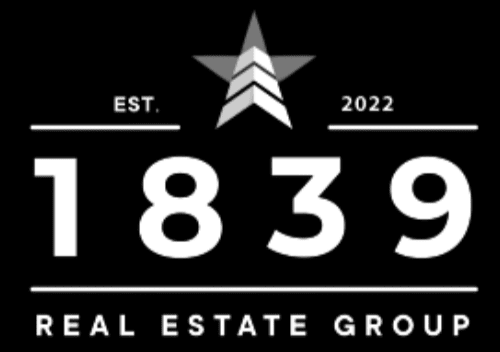Seizing the Market: Proven Retail Land Investment Strategies in Texas
Current Real Estate Market Trends
Understanding the current trends in the Texas real estate market is crucial for anyone looking to invest in retail land. Let’s delve into the dynamics of the Texas rural land markets, focusing on sales volume and price trends, as well as regional variances in land sales.
Overview of Texas Rural Land Markets
The Texas rural land market has experienced significant shifts over the past year. Despite a decline in sales volume, prices for rural land have continued to rise. This trend highlights the growing interest and potential for investment in rural areas, especially for those considering retail development opportunities.
Sales Volume and Price Trends
In the fourth quarter of 2023, the annual sales volume in Texas rural land markets slipped by 44.6 percent year-over-year. The total dollar volume saw an even steeper decline, dropping by 59.2 percent compared to the prior annualized total. A total of 279,509 acres changed hands, marking a 61.2 percent decrease over 2022.
However, it’s noteworthy that prices rose by 5 percent to $4,670 per acre statewide from year-end 2022 through year-end 2023. This price increase, despite the decline in sales volume, indicates a strong demand for rural land.
| Metric | Q4 2023 | Year-over-Year Change |
|---|---|---|
| Sales Volume (Acres) | 279,509 | -61.2% |
| Dollar Volume | – | -59.2% |
| Price per Acre | $4,670 | +5% |
Regional Variances in Land Sales
Across Texas’ seven regions, prices for rural land continued to increase, albeit with varying degrees of change. Region 2 (Far West Texas) experienced the most significant price jump at 23.6 percent. However, every region saw a decline in total acres sold, with Region 3 (West Texas) experiencing the steepest decline in acres sold at 74.4 percent.
| Region | Price Increase | Decline in Acres Sold |
|---|---|---|
| Region 2 (Far West Texas) | +23.6% | – |
| Region 3 (West Texas) | – | -74.4% |
Investors looking for land investment opportunities in Austin or other regions in Texas should consider these variances. Understanding these trends can help in identifying prime areas for commercial development and maximizing returns on investment. For more insights on how to navigate these regional differences, check out our guide on how to identify prime commercial land for sale.
Investment Strategies in Retail Land
Understanding the investment strategies in retail land is crucial for anyone looking to capitalize on the booming real estate market in Texas. Here, we delve into the factors influencing land investment decisions and explore the commercial development opportunities available.
Factors Influencing Land Investment Decisions
When considering retail land investment strategies in Texas, several key factors come into play that can significantly impact the potential return on investment. These factors include:
- Location: Proximity to major commercial hubs, transportation networks, and residential areas is essential. For example, land investment opportunities in Austin are particularly attractive due to the city’s rapid growth and economic development.
- Zoning Laws: Understanding the zoning laws for commercial real estate is critical. Zoning restrictions can determine what types of businesses can operate on the land and influence future development possibilities.
- Market Trends: Keeping abreast of market trends for commercial land in Austin and other key Texas regions helps investors make informed decisions. Current trends indicate a strong demand for retail spaces as consumer spending rebounds.
- Accessibility: Easy access to highways, public transportation, and major thoroughfares enhances the attractiveness of a retail location.
- Economic Development Zones: Leveraging economic development zones can offer tax incentives and other benefits that boost the investment’s profitability.
Commercial Development Opportunities
Texas presents a plethora of commercial development opportunities for investors looking to make a mark in the retail sector. The region’s robust economic growth and favorable business climate make it an ideal location for various types of retail developments.
Types of Retail Developments
- Shopping Centers: Large shopping centers can attract significant foot traffic, making them a lucrative investment. These centers often house a mix of anchor tenants and smaller retail stores.
- Mixed-Use Developments: Combining residential, commercial, and retail spaces, mixed-use developments are becoming increasingly popular. They offer a balanced environment that caters to various needs, enhancing the property’s value. For more insights, visit our article on the benefits of mixed-use development in urban areas.
- Standalone Retail Stores: For investors looking for lower initial costs, standalone retail stores present an excellent opportunity. These properties are easier to manage and can be customized to suit specific business needs.
Key Considerations for Development
- Infrastructure Projects: Future infrastructure projects impacting land value in Texas can significantly enhance the appeal of a retail location. Investors should stay informed about upcoming projects to make strategic decisions.
- Off-Market Deals: Finding off-market commercial land deals can provide unique opportunities that are not available to the general public. Platforms like LoopNet can be invaluable for discovering these hidden gems. LoopNet currently lists 100,000 land listings for sale, making it a leading marketplace for commercial real estate.
- ROI Maximization: To maximize ROI from commercial land investments, investors should focus on high-demand areas, negotiate favorable terms, and consider potential appreciation in land value.
Leveraging the expertise of professionals like the 1839 Real Estate Group can be instrumental in navigating the complexities of land investment. They specialize in assisting developers and business owners with investment analysis, acquisition, and development services, ensuring a personalized approach tailored to each client’s goals. By understanding these factors and exploring the vast commercial development opportunities in Texas, investors can make informed decisions that lead to successful retail land investments.
Economic Indicators Impacting Land Investments
Understanding the economic indicators that influence land investments is crucial for making informed decisions. In Texas, factors such as retail inventories, rental vacancy rates, and homeownership rates play significant roles in shaping the commercial real estate market.
Impact of Retail Inventories
Retail inventories are a key indicator of economic health and directly impact land investment strategies. In June 2024, advance retail inventories in Texas were $802.1 billion, marking an increase of 0.7% from the previous month. This growth in inventory suggests a robust retail sector, which can drive demand for retail land development.
| Month | Retail Inventories (in billion $) | Percentage Change |
|---|---|---|
| May 2024 | 796.5 | -0.2% |
| June 2024 | 802.1 | +0.7% |
Investors should monitor retail inventory trends as they provide insights into consumer demand and the potential for commercial development. For more information on identifying prime commercial land, visit our guide on how to identify prime commercial land for sale.
Rental Vacancy and Homeownership Rates
Rental vacancy rates and homeownership rates are essential indicators of housing market dynamics and can influence land investment decisions. In the first quarter of 2024, the rental vacancy rate in Texas was 6.6%, which remained consistent with the rate in the first quarter of 2023. A stable vacancy rate indicates a steady rental market, which can be favorable for investors looking to develop multifamily properties.
| Quarter | Rental Vacancy Rate (%) | Homeownership Rate (%) |
|---|---|---|
| Q1 2023 | 6.6 | 65.6 |
| Q1 2024 | 6.6 | 65.6 |
The homeownership rate in Texas was 65.6% in the first quarter of 2024, also unchanged from the previous year. A stable homeownership rate suggests a balanced housing market, providing opportunities for both residential and commercial land development.
Investors can leverage these indicators to make strategic decisions regarding land acquisitions and development. For best practices and tips on multifamily land development, visit our article on multifamily land development: best practices and tips.
By keeping a close eye on economic indicators such as retail inventories, rental vacancy rates, and homeownership rates, investors can gain valuable insights into the market conditions that impact land investments. For further reading on the top areas for commercial development in Texas, explore our detailed article on top areas for commercial development in Texas.



